Search Images
Browse Content (p. 1668)
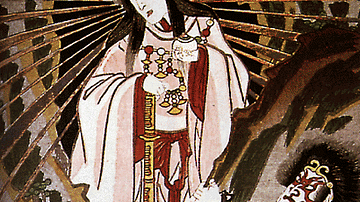
Image
Amaterasu
A print by Utagawa Toyokuni III showing the sun goddess Amaterasu, the most important deity of the Japanese Shinto religion. Here she emerges from self-exile in a cave. The figure on the right is most probably the god Ame-no-tajikara-wo.
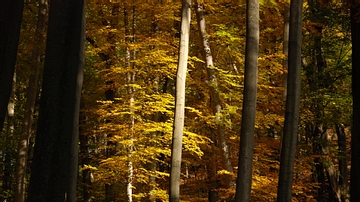
Image
Autumn Forest
Photo of the Bükk Hills (Hungary) in autumn.
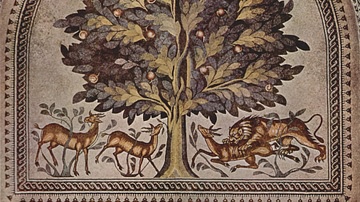
Image
Mosaic, Khirbat Al Mafjar
Lion attacking gazelles in a mosaic from the floor of the bath hall in the palace complex of Khirbat Al Mafjar. The palace was built by Walid Ibn Yazid in 734 CE and is located near Jericho in the Jordan Valley. It is one of the last surviving...
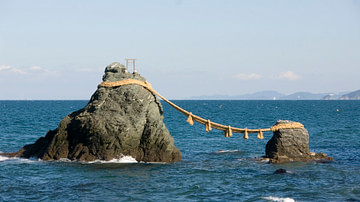
Image
Meoto-iwa or the Wedded Rocks
The wedded rocks known as Meoto-iwa are located in Japan near Ise jingu. They represent the two creator gods of the Shinto religion, Izanami and Izanagi. The rocks are joined by a sacred rope (shimenawa) of plaited rice stalks which symbolizes...
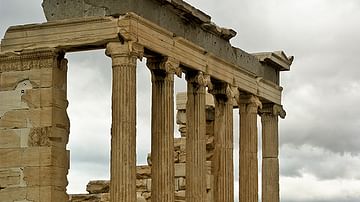
Image
Erechtheion Entrance Facade
The six Ionic columns of the front entrance of the Erechtheion temple on the Athenian acropolis which was constructed between 421 and 406 BCE.
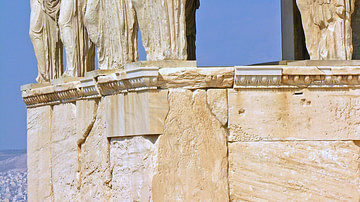
Image
Caryatids of the Erechtheion
A detail of the south porch of the Erechtheion temple on the Athenian acropolis. The building was constructed between 421 to 406 BCE to house the ancient wooden cult statue of Athena and as a shrine to various local deities including Erechtheus...

Image
Erechtheion Floor Plan
A floor plan of the Erechtheion on the Athenian acropolis, constructed 421-406 BCE. On the right, indicated in purple are the six Caryatids of the south porch. The main cella is divided into four chambers, the largest of which housed the...
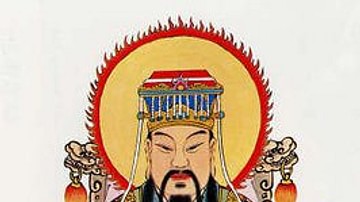
Image
The Jade Emperor
A print of the Jade Emperor, (aka Yuhuang Shangdi, Yudi and Mr Heaven), the supreme deity in Chinese traditional religion. He is often depicted, as here, seated on a throne and wearing full imperial costume.

Image
Confucius by Wu Daozi
No contemporary portrait of the Chinese philosopher Confucius (c. 551 to c. 479 BCE) survives but the most popular print during the Imperial period was taken from a now lost original by Wu Daozi (Wu Taoutsi) in the 8th century CE.

Image
Confucius
A statue of Confucius, located in Hunan, China on the shore of the Dongting Lake. No contemporary physical likeness exists of the Chinese philosopher Confucius (c. 551 to c. 479 BCE) but he is most often represented as an old man with long...